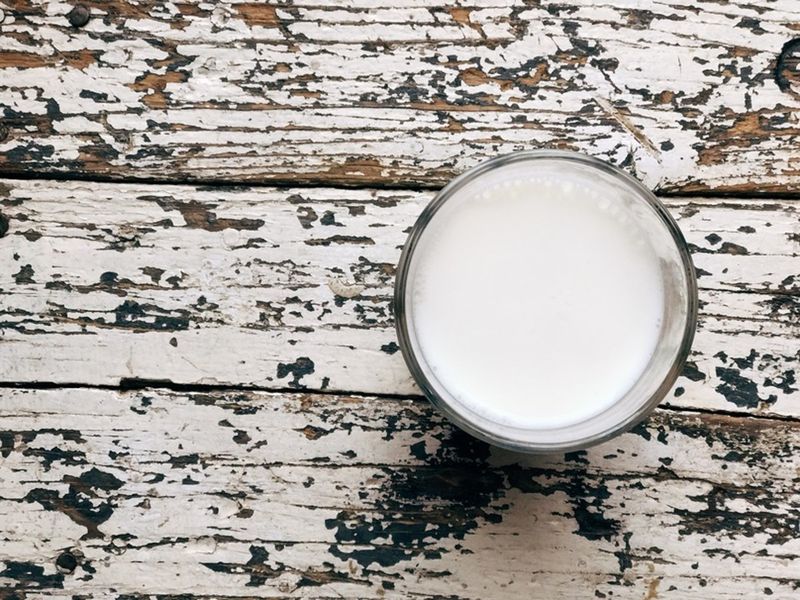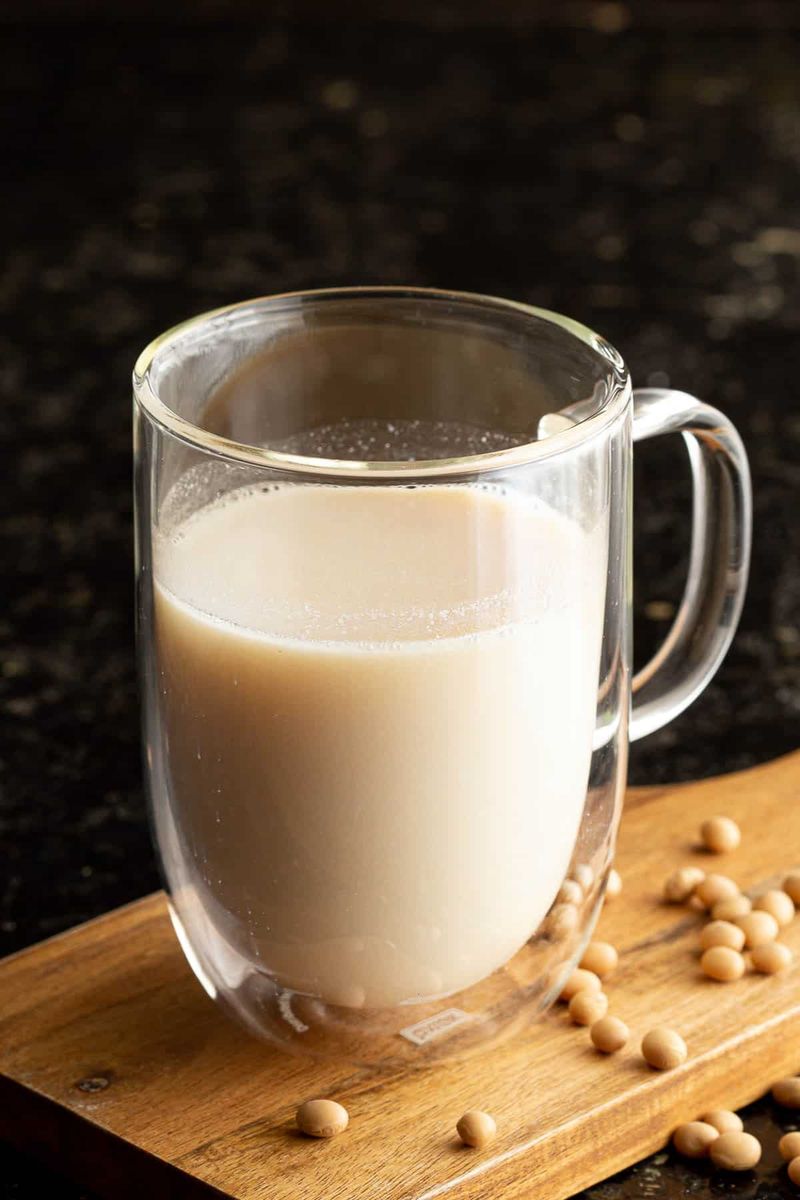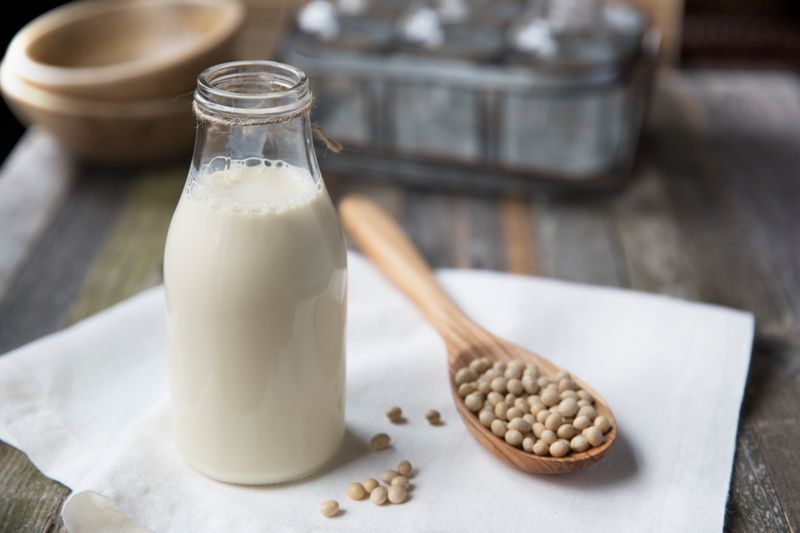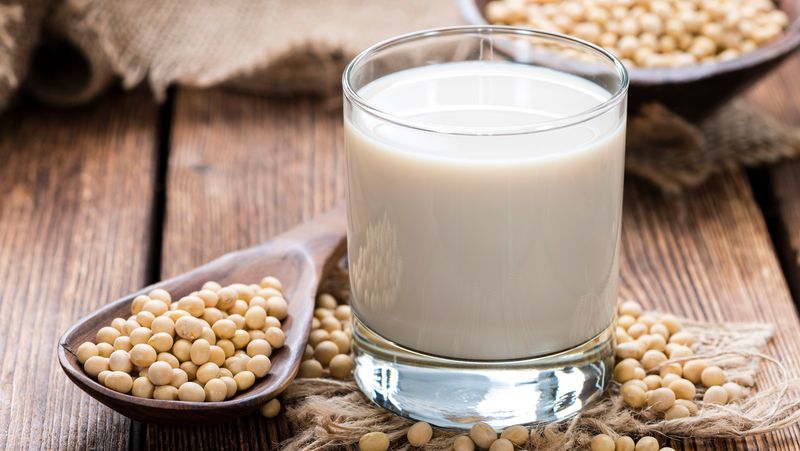Soy milk has become a popular dairy alternative, but like any food product, it doesn’t last forever. Drinking spoiled soy milk can lead to stomach upset and other unpleasant symptoms.
Luckily, there are several telltale signs that can help you determine if your soy milk has gone bad before you take a sip.
1. Sour Smell Test

Fresh soy milk has a mild, slightly sweet aroma. If your nose detects a sour, acidic, or fermented smell when you open the container, that’s nature’s warning sign.
Don’t ignore this unmistakable red flag. Your nose knows when something’s off, even before your taste buds get involved.
2. Chunky Texture Appears

Soy milk should pour smoothly like regular milk. Lumps, chunks, or curdling indicate protein separation has occurred due to bacterial growth.
Try pouring some into a clear glass. Examine it against light. Any floating particles or sediment at the bottom are clear warning signs of spoilage.
3. Color Changes Drastically

Fresh soy milk typically has a creamy white or slightly beige color. Yellowing, graying, or any unusual color shift suggests oxidation or bacterial growth.
Compare it with fresh soy milk if possible. The difference between good and spoiled product will be obvious even to untrained eyes.
4. Bitter Taste Emerges

Good soy milk has a mild, slightly sweet flavor. A tiny taste test can reveal spoilage through bitterness, sourness, or an unpleasant aftertaste.
Don’t swallow if it tastes off! Just a small drop on your tongue is enough to detect bad flavor. Spit it out immediately if something seems wrong.
5. Container Bloating Occurs

Bacteria producing gas can cause unopened containers to bulge or swell. This pressure buildup is a definite sign of spoilage.
Check if the carton sides feel tight or if the plastic bottle seems firmer than usual. A bloated container means bacteria are actively growing inside, creating gases.
6. Expiration Date Passed

While not foolproof, the date printed on packaging provides a reliable guideline. Most soy milk lasts 7-10 days after opening, even if the printed date is further away.
Refrigerated storage extends shelf life. Room temperature soy milk spoils much faster than its properly chilled counterpart.
7. Unusual Thickness Develops

Fresh soy milk has a consistent viscosity similar to dairy milk. If it becomes abnormally thick, slimy, or resembles yogurt, bacteria have altered its texture.
Try the spoon test. Dip a clean spoon in and observe how it coats the utensil. Good soy milk flows smoothly off the spoon without leaving a thick film.
8. Film Forms On Surface

A thin film or skin developing on top indicates protein breakdown. This layer might appear slightly off-color or have a different texture than the liquid below.
Gently tilt the container to see if a film sticks to the sides. Fresh soy milk shouldn’t leave this kind of residue when poured or moved.
9. Separation Without Shaking

Some separation is normal in plant milks, but it should remix easily with a quick shake. If distinct layers remain after vigorous shaking, that’s trouble.
Hold a clear container up to light. You shouldn’t see defined boundaries between watery and solid components after proper mixing.
10. Pressure Release When Opening

A hissing sound or visible release of pressure when opening indicates gas buildup from bacterial fermentation. Think of it like opening a soda bottle – that pressure isn’t normal for soy milk.
This sign is especially concerning in shelf-stable varieties that haven’t been opened previously.
11. Mold Spots Appear

Visible mold can grow on soy milk, especially around the container opening. Look for fuzzy patches or discolored spots on the liquid surface or container rim.
Even if mold appears only in one area, the entire contents are contaminated. Never scrape off mold and consume the rest – discard immediately!
12. Bubble Formation Increases

A few bubbles are normal when pouring fresh soy milk. Excessive or persistent bubbling suggests fermentation is occurring.
Watch after pouring into a glass. Fresh soy milk bubbles dissipate quickly. If bubbles remain or continue forming while sitting, bacteria are likely producing gas as they multiply.
13. Storage Time Exceeds Norms

Unopened refrigerated soy milk typically lasts 7-10 days beyond its printed date. Once opened, consume within 5-7 days for best quality.
Shelf-stable varieties last longer until opening. Mark the opening date on containers with a permanent marker to track freshness accurately.
14. Coffee Curdling Test

Fresh soy milk blends smoothly into hot coffee. A quick test: add a splash to hot coffee and watch what happens.
If it immediately separates, curdles, or forms small floating clumps, the milk has likely spoiled. Good soy milk might separate slightly but won’t form distinct solid pieces.
15. Vinegar Reaction Check

Mix a small amount of soy milk with a few drops of vinegar. Fresh soy milk will curdle slightly from the acid, forming small, soft curds.
Spoiled soy milk reacts differently – forming larger, harder curds instantly or sometimes not reacting at all if proteins have already broken down.
16. Unusual Fizzing Sounds

Put your ear close to an open container. Fresh soy milk is silent, while spoiled milk might make subtle fizzing or popping sounds from fermentation.
This auditory clue indicates active bacterial growth producing gas bubbles. The sound resembles a very faint carbonated beverage effect.
17. Stomach Discomfort Follows

The most unfortunate way to discover spoiled soy milk is after consumption. Nausea, cramps, or digestive upset within hours of drinking are telltale signs.
While not immediately dangerous for most healthy adults, consuming spoiled plant milk can cause temporary discomfort. When in doubt, always trust your other senses first!

